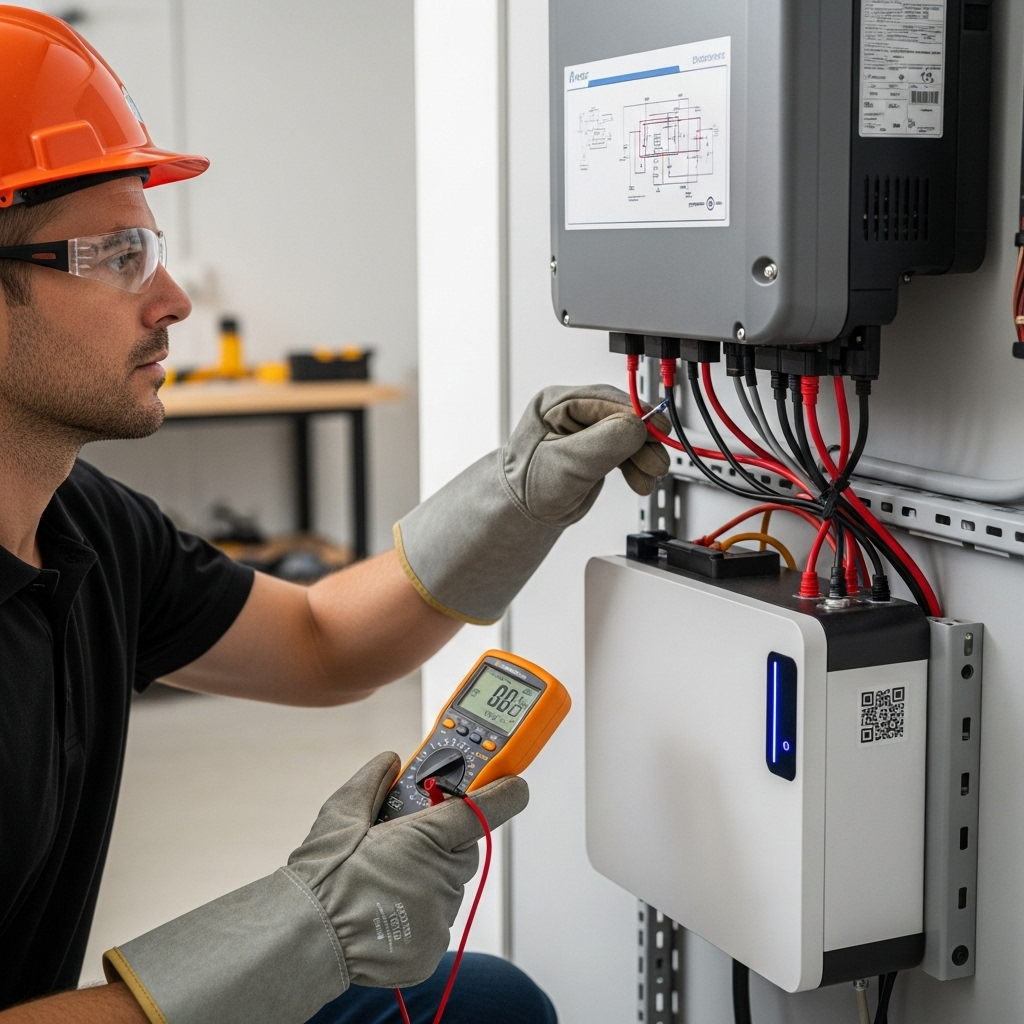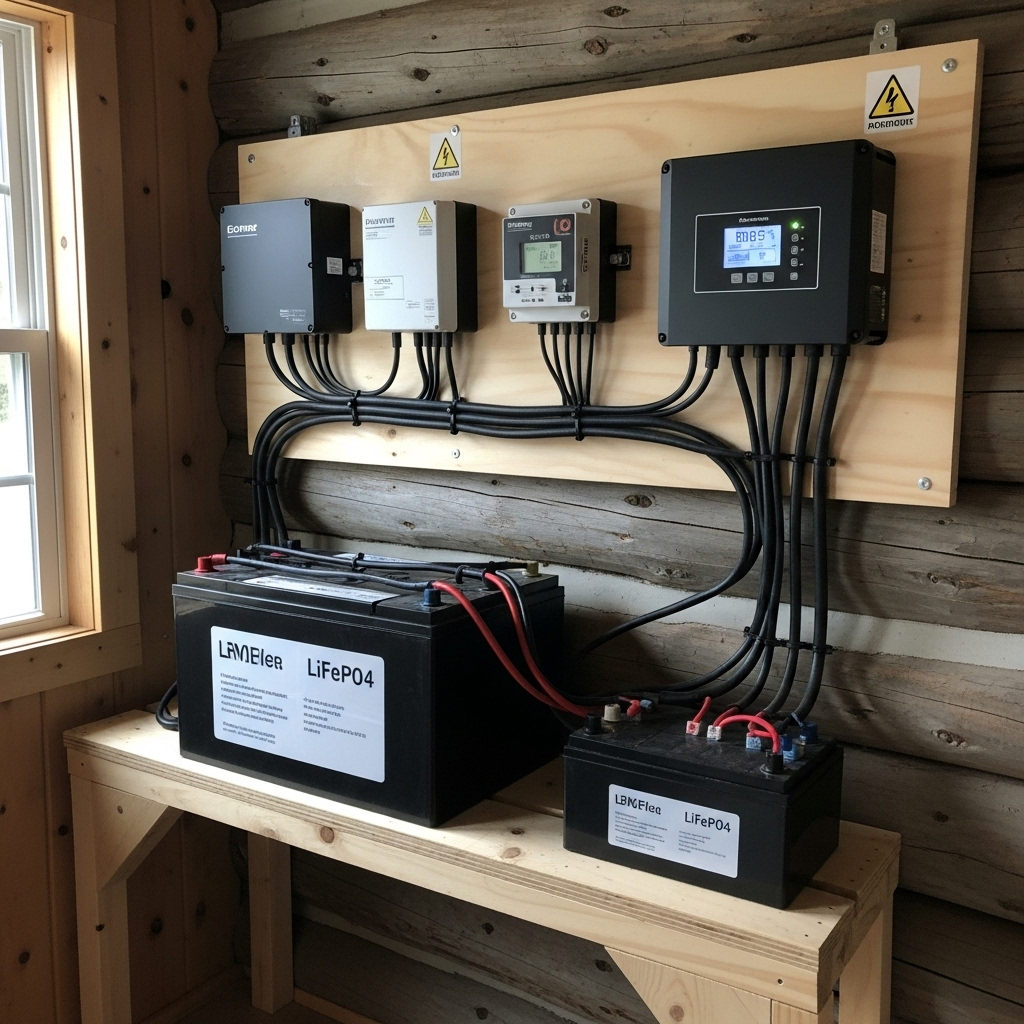When assembling a small off-grid solar array, every component choice matters. You want a system that is efficient, safe, and reliable. This often leads to a common question in DIY solar wiring: is a combiner box really necessary? For small systems, the answer isn't always a simple yes or no. It depends entirely on your specific setup. This overview will clarify the role of a combiner box, explain when it becomes a critical safety device, and detail the safe alternatives for simpler arrays.
What Exactly Is a Solar Combiner Box?
A solar combiner box is an electrical enclosure. Its main purpose is to bring the output of multiple strings of solar panels together. Think of it as a central hub for your panel wiring before the power is sent to your solar charge controller and the rest of your system. It serves a few key purposes that are vital for larger or more complex solar installations.
Its Primary Functions
The core functions of a combiner box go beyond just tidying up wires. It is a critical piece of safety equipment. Inside the box, you will find terminals for connecting the positive and negative wires from your solar panel strings. More importantly, it houses overcurrent protection devices (OCPDs), which are typically fuses or circuit breakers. Each positive wire from a string of panels is connected to a fuse or breaker. This setup protects your system from potentially dangerous overcurrent situations. It also acts as a convenient disconnect point, allowing you to safely isolate the panels from the rest of the system for maintenance.
The Difference from a Junction Box
It's easy to confuse a combiner box with a junction box, but they serve different roles. A junction box is the small, weatherproof enclosure found on the back of every solar panel. It's where the internal wiring of the panel terminates and is the connection point for the MC4 cables that link panels together. In contrast, a combiner box is a separate piece of equipment used to consolidate the wiring from multiple parallel strings of panels.
The 'Rule of Three': When a Combiner Box Becomes Essential
For most DIY solar projects, the decision to use a combiner box comes down to a simple guideline known as the 'rule of three'. This rule is based on safety principles designed to prevent electrical hazards, particularly the risk of fire. Understanding this rule starts with understanding how panels are wired in parallel.
Understanding Parallel Strings
When you connect solar panels in parallel, you connect the positive terminals of all panels together and all the negative terminals together. This method increases the total amperage (current) of the array while keeping the voltage the same as a single panel. This is a common strategy for 12V or 24V off-grid systems. According to the International Energy Agency, the components associated with power delivery, including electrical protection devices and wiring, are all considered part of the 'balance of system' (BOS). As described in the Solar Energy Perspectives report, these components are crucial for a functioning PV system.
The Safety Threshold
The 'rule of three' states that if you have three or more parallel strings of solar panels, you must use a combiner box with appropriate fuses or breakers for each string. The reason is to protect against back-feed current. In a fault scenario, such as a short circuit in one panel, the other healthy strings can send their combined current flowing back into the faulty string. With two strings, the current from one is generally not enough to cause a hazard. But with three or more, the combined current can easily exceed the capacity of the panel's wiring, leading to overheating and a potential fire.
Scenarios for Small Off-Grid Systems (1-2 Strings)
What if your system is smaller? For many cabin, RV, or small farm setups that use only one or two parallel strings, a full combiner box is often not required. The safety risk from back-feed current is significantly lower in these configurations. However, this does not mean you can ignore overcurrent protection entirely.
The Simple Two-Panel Setup
In a system with just two parallel strings, the potential back-feed current from one string to the other is limited to the output of a single string. Solar panel wires are typically rated to handle this level of current without issue. Therefore, the National Electrical Code (NEC) does not mandate fused combining for just two strings. You can safely connect the two strings using MC4 branch connectors. Even so, it is still best practice to install a DC circuit breaker between the panels and the charge controller to protect the controller and allow for easy disconnection.
What to Use Instead of a Combiner Box
For small off-grid solar arrays with one or two strings, you have simpler and more cost-effective options than a full combiner box. The most common method is to use MC4 T-branch connectors to join the parallel strings. After combining the wires, you should install an appropriately sized DC circuit breaker or inline fuse before connecting to the input of your solar charge controller. This provides essential overcurrent protection for your downstream equipment and serves as a manual disconnect switch. This approach simplifies DIY solar wiring while maintaining off-grid solar system safety.
Making the Right Choice for Your System
Choosing the right connection and protection method is fundamental to your system's longevity and safety. The decision hinges on the number of parallel strings you plan to install, both now and in the future. A well-planned wiring strategy also impacts the overall efficiency of your power generation and storage. To ensure your system operates at peak efficiency, it's crucial to understand the relationship between your components. The performance of your solar storage is directly tied to a well-designed wiring setup, as detailed in this ultimate reference on solar storage performance. The U.S. Department of Energy also provides extensive resources on solar energy, emphasizing the importance of proper installation for both utility-scale and small-scale applications.
| Number of Parallel Strings | Combiner Box Recommended? | Alternative Solutions | Key Considerations |
|---|---|---|---|
| 1 String | No | Direct connection to a DC breaker/fuse, then to the charge controller. | Overcurrent protection is still needed for the charge controller. |
| 2 Strings | Optional | MC4 branch connectors to parallel the strings, followed by a DC breaker/fuse. | Consider a combiner box if you plan to expand your system in the future. |
| 3+ Strings | Yes (Essential for Safety) | None. A combiner box with individual string fusing is required. | Protects against hazardous back-feed current and potential fires. |
A Final Check on Your Off-Grid Setup
Ultimately, the need for a solar combiner box on a small off-grid array comes down to safety and the number of parallel strings. For systems with only one or two strings, you can often use simpler methods like branch connectors and a single breaker. Once you reach three or more strings, a combiner box with individual string protection is no longer optional—it is a critical safety device. Prioritizing safe wiring practices ensures your investment in energy independence is secure and reliable for years to come. As the International Renewable Energy Agency (IRENA) notes, small-scale solar systems can bring considerable benefits, and proper installation is key to realizing them safely.
Disclaimer: This information is for educational purposes only. Always consult local electrical codes and a qualified electrician before starting any solar installation project. This content does not constitute professional investment or legal advice.
Frequently Asked Questions
Can I use a regular electrical box as a combiner box?
This is not a good idea. Solar combiner boxes are specifically designed for this purpose. They are NEMA rated for outdoor use to be weatherproof and are built to handle high DC voltages and currents, which behave differently than the AC electricity your home uses.
What size fuse or breaker do I need for my solar strings?
A common rule of thumb is to size the fuse or breaker at 1.56 times the solar panel's short-circuit current (Isc) rating. For example, if your panel's Isc is 10A, the calculation would be 10 x 1.56 = 15.6A. You would then round up to the next standard breaker size, which is typically 20A. Always verify this against the panel's documentation and local electrical codes.
Does a combiner box go before or after the charge controller?
A combiner box is installed between the solar panels and the solar charge controller. Its function is to safely combine the DC power from multiple panel strings before that power is delivered to the charge controller for battery charging.





Leave a comment
All comments are moderated before being published.
This site is protected by hCaptcha and the hCaptcha Privacy Policy and Terms of Service apply.